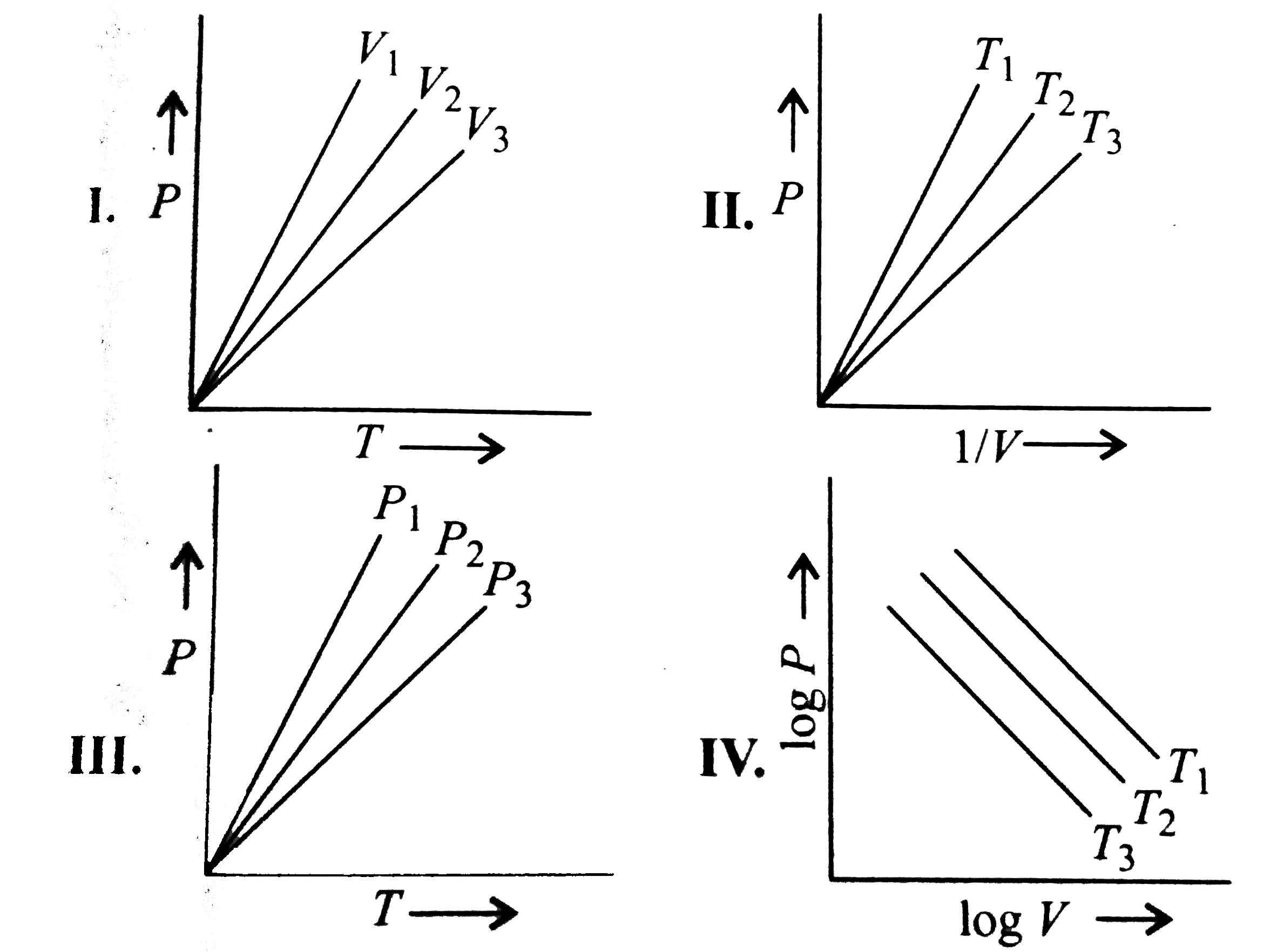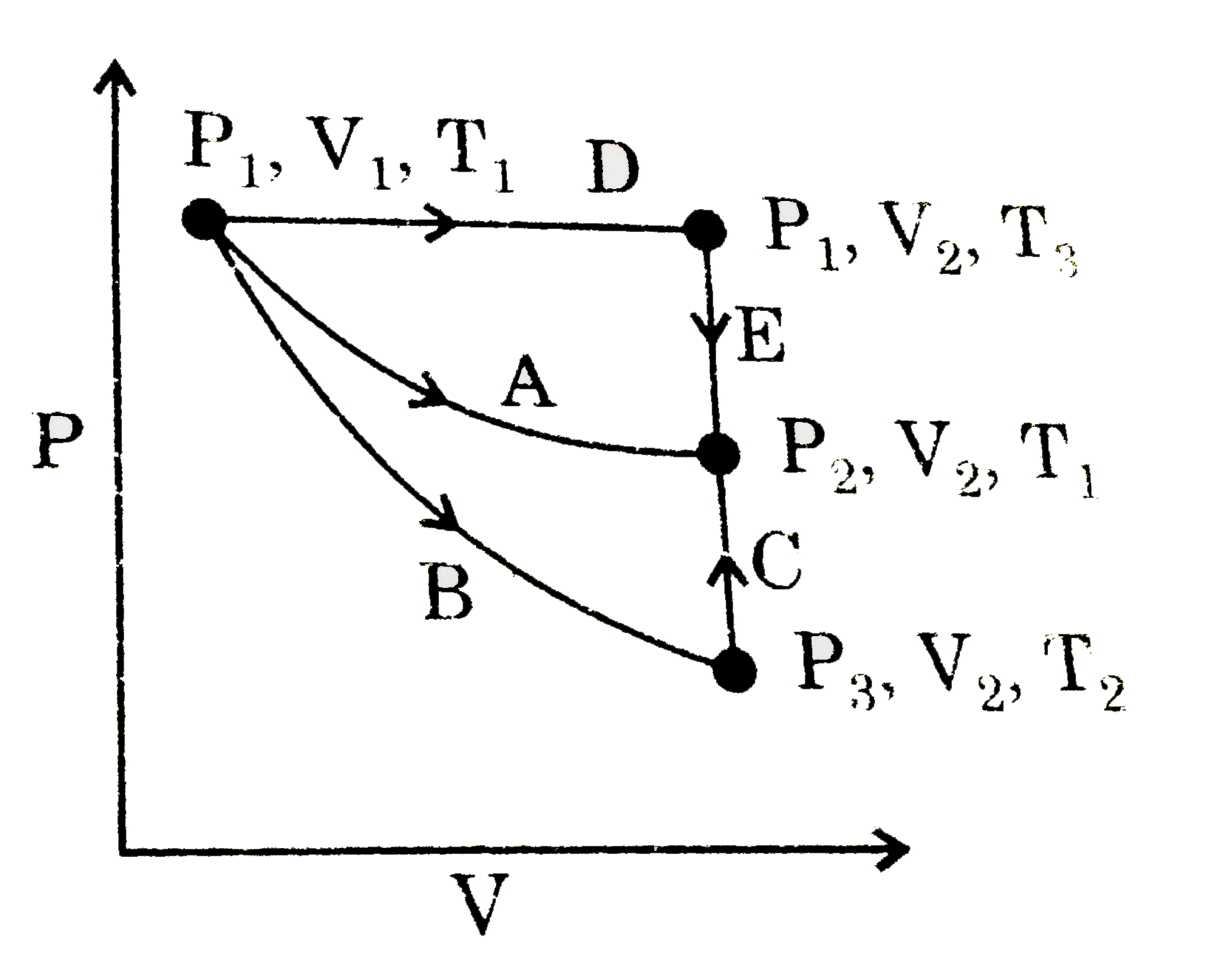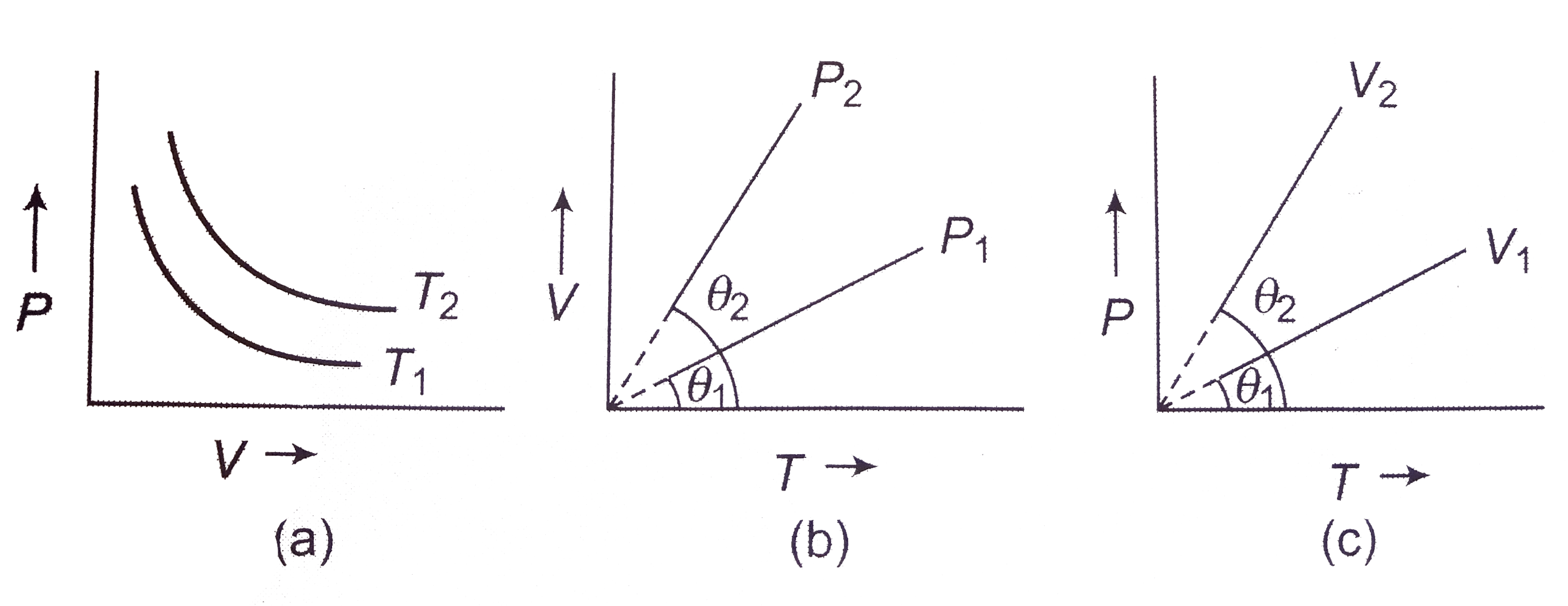Examine the following plots and predict whether in (i) P1<P2andT1>T2 , in (ii) T1=T2<T3, in (iii) V1>V2,in(iv)P1>P2orP2>P1
_E01_267_Q01.png)
The correct Answer is:(i)P1<P2,T1<T2 (ii) T1=T2<T3 (iii) V1<V2(iv)P1>P2
(i) P1V1=nRT1andP2V2=nRT2
∵P2V2>P1V1
⇒nRT2>nRT1⇒T2>T1 For same volume, P1V=nRT1
∵T1<T2 & P2V=nRT2
⇒P1<P2
_E01_267_S01.png)
(ii) P2V2=P1V1=2PV=P2V⇒T1=T2 For state 3:
Let V3=3V/2
P3=3P/2 then P3V3=3P23V2=94PV
∴T3>T2 & T3<T1
_E01_267_S02.png)
(iii) P=mT+C⇒P−CT=m
⇒(P1−CT1)=(P2−CT2) From ideal gas equation P1V1T1=P2V2T2⇒P1V1P2V2=T1T2=(P1−CP2−C)
⇒V1V2=(1−CP1/(1−CP2)<1⇒V1<V2
(iv) V=mT−C,V1+CT1=V2+CT2thenP1V1=nRT1
P2V2=nRT2⇒P1V1P2V2=nRT1nRT2
⇒P1P2=T1T2×V2V1=(V1+CV1)(V2V2+C)
P1P2=(1+CV1)11+CV2>1∴P1>P2
_E01_267_S03.png)
_E01_267_S04.png)
Topper's Solved these Questions
- BOOK - ALLENCHAPTER - GEOMETRICAL OPTICSEXERCISE - EXERCISE - 04 (B)15videos
GEOMETRICAL OPTICS
- BOOK - ALLENCHAPTER - GEOMETRICAL OPTICSEXERCISE - EXERCISE - 05 (A)73videos
GEOMETRICAL OPTICS
- BOOK - ALLENCHAPTER - GEOMETRICAL OPTICSEXERCISE - Comprehension Based Questions66videos
GEOMETRICAL OPTICS
- BOOK - ALLENCHAPTER - CURRENT ELECTRICITYEXERCISE - All Questions427videos
CURRENT ELECTRICITY
- BOOK - ALLENCHAPTER - GRAVITATIONEXERCISE - EXERCISE 49videos
GRAVITATION
Similar Questions
Knowledge Check
- Question 1 - Select One
For 1 mol of an ideal gas, V1>V2>V3 in fig. 1, T1>T2>T3 in fig. 2, P1>P2>P3 in fig. 3, and T1>T2>T3 in fig. 4, then which curves are correct.

 A1,2B1,2,3C2,4D1,3,4
A1,2B1,2,3C2,4D1,3,4 - Question 2 - Select One
Consider three blocks of masses m1,m2,m3 interconnected by strings which are pulled by a common force F on a frictionless horizontal table as in the figure. The tension T1andT2 are also indicated

a) T2>T1 if m2>m1
b) T2=T1 if m2=m1
c) T2>T1 always
d) acceleration of the system=Fm1+m2+m3Aa, bBb, dCa, dDc, d - Question 3 - Select One
For an ideal gas, an illustration of the different paths, A (B+C) and (D+E) from an intial state P1,V1,T1 to a final state P2,V2,T1 as shown in the given figure.

Path (A) represents a reversible isothernal expanison from P1V1 to P2V2. Path (B+C) represents a reversible adiabatic expansion (B) from P1,V1,T1 to P3,V2,T2 followed by reversible heating the gas at constant volume (C) from P3,V2,T2 to P2,V2T1 to P1,V2,T3 followed by reversible cooling at a constant volume V2 (E) from P1,V2,T3 to P2,V2,T1
What is ΔS for path (D+E) ?AzeroBT2∫T1CV(T)TdTC−nRln.V2V1DnRln.V2V1
P1V1T1=P2V2T2 is -
View SolutionFor 1mol of an ideal gas, V1>V2>V3 in fig. (I),T1>T2>T3 in fig. (II), P1>P2>P3 in fig. (III), and T1>T2>T3 in fig. (IV) , then which curves are correct.
 View Solution
View SolutionAn ideal gas follows a process described by PV2=C from (P1,V1,T1) to (P2,V2,T2) (C is a constant). Then
View SolutionAccording to the kinetic theory of gases
(i) P∝vrms
(ii) vrms∝T
(iii) vrms∝T1/2
(iv) P∝v2rmsView SolutionFor an ideal monoatomic gas, an illustration of three different paths A,(B+C) and (D+E) from an initial state P1,V1,T1 to a final state P2,V2,T1 is shown in the given figure .

Path A represents a reversible isothermal from P1V1 to P2,V2, path (B+C) represent a reversible adiabatic expansion (B) from P1,V1,T1 to P3,V2,T2 followed by reversible heating of the gas at constant volume (C) from P3,V2,T2 to P2,V2,T1. Path (D+E) represents a reversible expansion at constant pressure P1(D) from P1,V1,T1 to P1,V2,T3 followed by a reversible cooling at constant volume V2(E) form P1,V2,T3 to P2,V2,T1
What is qrev for path (A)?View Solution


